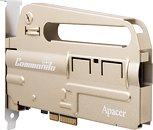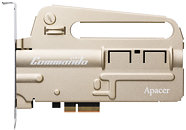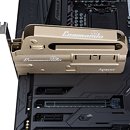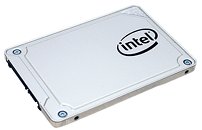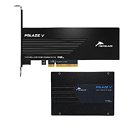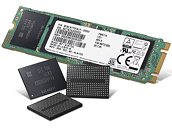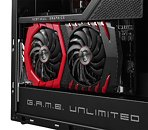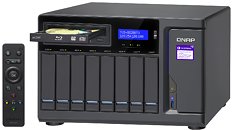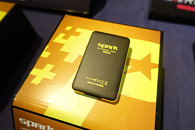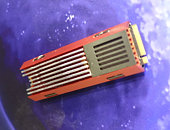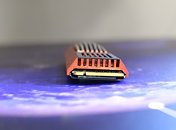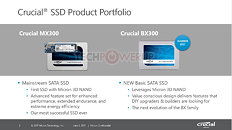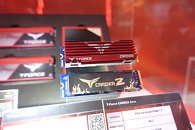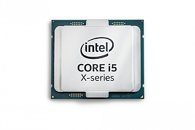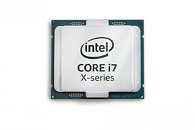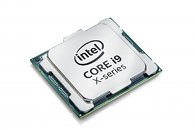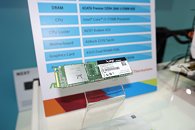
Apacer Intros the PT920 Commando PCIe NVMe SSD
Apacer introduced the PT920 Commando, a PCI-Express SSD built in the add-on card form-factor, with PCI-Express 3.0 x4 host interface. The drive is characterized by a plastic shroud shaped like the top of an M4 or M16 assault rifle. Available in 240 GB and 480 GB capacities, the drive takes advantage of the NVMe 1.2 protocol. The company didn't reveal controller or NAND flash manufacturers.
The drives offer sequential reads of up to 2,500 MB/s, with up to 1,300 MB/s sequential writes for the 480 GB model, and up to 860 MB/s sequential writes for the 240 GB model. 4K random write performance is rated at up to 175,000 IOPS for the 480 GB model, and up to 160,000 IOPS for the 240 GB model. The drive feature most common SSD features such as ECC, NCQ, and TRIM. The company didn't reveal pricing, although it backs the drives with 3-year warranties.
The drives offer sequential reads of up to 2,500 MB/s, with up to 1,300 MB/s sequential writes for the 480 GB model, and up to 860 MB/s sequential writes for the 240 GB model. 4K random write performance is rated at up to 175,000 IOPS for the 480 GB model, and up to 160,000 IOPS for the 240 GB model. The drive feature most common SSD features such as ECC, NCQ, and TRIM. The company didn't reveal pricing, although it backs the drives with 3-year warranties.
